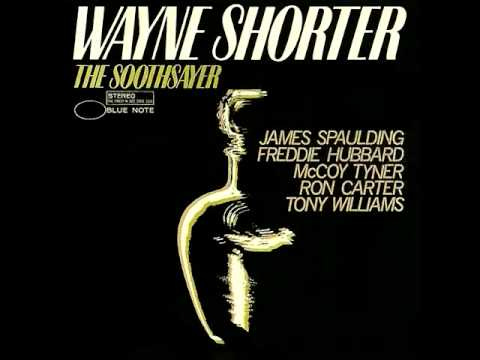Wayne Shorter: The Soothsayer (1965)
The greatest living jazz composer's classic work remained in the vaults until 1979.
Blue Note has been pushing a ton of just-ok music out the door as part of its Tone Poet series: second or third-tier releases, at best. Another column could be written about how these re-release choices actually change the history of jazz, or at least the perceptions of new fans or consumers—what’s available and in print makes one part of an artist’s discography appear to be more important than another. Oftentimes—and especially when it comes to Tone Poet—the three-star albums get the deluxe treatment and the five-star records are allowed to wallow or go out of print.
Wayne Shorter’s The Soothsayer is as good as anything that was released on Blue Note in the 1960s and, as far as I know, there are no plans for a deluxe reissue.
This session sat in the vaults from 1965 until 1979, when it was finally released in Japan and the US as Blue Note archival material. Nobody cared. The music buying scene in 1979 was focused on disco and pop, and even jazz acts were smoothing out the funk from the fusion and making their records glisten. The avant-garde was doing what it was doing—some of it wonderful, as always—but far away from breaking even. It wouldn’t be until a few years later that the Young Lions showed up with Wynton Marsalis and made acoustic hard bop (and then more adventurous styles) popular again.
Until his last two exploratory and tentative releases, Wayne Shorter’s Blue Note output was classic. Not a wrong move or a bad session, released or unreleased. That’s especially true for the material in The Soothsayer; “Lost,” “Angola,” and “Valse Triste” have been staples of Shorter’s concert repertoire for ages, and yet Blue Note didn’t see the value in releasing it at the time. The band, too, was as formidable as it gets: Freddie Hubbard, James Spaulding, McCoy Tyner, Ron Carter, and Tony Williams. It would be nearly impossible to make a bad record with this group. Every track is a killer, but here are the highlights. “Lady Day” might be one of Shorter’s most beautiful and bittersweet compositions.



